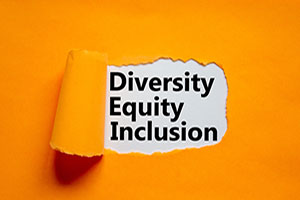- The blog below was kindly authored for HEPI by Claire Toogood, Research and Strategic Projects Manager at AGCAS.
- Elsewhere, Nick Hillman, HEPI’s Director, has responded to the Post-16 Education and Skills White Paper in a piece for Times Higher Education.
In recent years, UK higher education has made significant strides in embedding employability into the curriculum. From frameworks and toolkits to strategic initiatives, the sector has embraced the idea that employability is not an add-on, but a core element and outcome of any academic course. Yet, as the new Uncovering Skills report reveals, embedding is only part of the story. A future challenge, and significant opportunity for impact, lies in helping students uncover, recognise, and articulate the skills they are already developing.
This project, led by AGCAS and supported by Symplicity, draws on three national datasets, including focus groups, event survey data, and applications to the inaugural Academic Employability Awards. It builds on foundational work such as Kate Daubney’s concept of “Extracted Employability” which reframed employability as something inherent in academic learning, not externally imposed. Alongside sector-wide efforts like the AGCAS Integrating Employability Toolkit and Advance HE’s embedding employability framework, and institutional contributions like Surfacing Skills and Curriculum Redefined at the University of Leeds, Daubney’s work lays the groundwork for a more inclusive and intentional approach to employability.
The latest findings from the Uncovering Skills project suggest that visibility, confidence, and perceived relevance remain major barriers. Students often struggle to recognise the value of their informal experiences (such as part-time work, caring responsibilities, and volunteering) and they can lack the language to describe these in employer-relevant terms. As one focus group participant noted, ‘Students often think if it’s not linked to their degree then it is not relevant.’ Another added, ‘They disregard skills gained from everyday life – like being a parent or managing during Covid.’. To resolve this, reflection is critical, but it is inconsistently supported across higher education. Time-poor students tend to engage only when prompted by immediate needs, such as job applications. ‘Reflection from the student perspective doesn’t become a need until they’ve got an interview,’ said one participant. Others highlighted that ‘self-reflection and deeper knowledge of skills is where students fall down… poor preparation in earlier education is a factor.’.
The report also highlights that some student cohorts face compounded challenges. International students, disabled students, and those from widening participation backgrounds require tailored and targeted support to uncover and express their strengths. Institutional collaboration with career development experts is essential, yet reflections from careers professionals involved in the project show that they are not always included in curriculum design, and staff who champion employability often lack recognition, no matter where they are employed within their institution.
Technology, including AI, offers new possibilities, but also risks encouraging superficial engagement if not used intentionally. ‘Rather than learning what these skills are and having to articulate them, they just abdicate that responsibility to AI,’ warned one contributor. Another observed that students are ‘superficially surfing through university – not as connected to skills development’. The Uncovering Skills report includes a series of case studies that explain how careers professionals and academic staff at ACGAS member institutions are tackling these multiple challenges.
So, what needs to change?
The report makes six recommendations:
- Make skills visible and recognisable: Use discipline-relevant language and real-world examples to help students connect academic learning to transferable skills.
- Support students to uncover skills across contexts: Validate informal and non-traditional experiences as legitimate sources of skill development. Embed reflection opportunities throughout.
- Equip staff to facilitate skills recognition: Provide training, shared frameworks, and recognition for staff supporting students in uncovering and articulating their skills.
- Use technology to enhance, not replace, reflection: Promote ethical, intentional use of AI and digital tools to support self-awareness and skill articulation.
- Tailor support to diverse student needs: Design inclusive, flexible support that reflects the lived experiences and barriers faced by different student cohorts.
- Foster a culture of skill recognition across the institution: Embed uncovering skills into institutional strategy, quality processes, and cross-functional collaboration.
The report includes a call to action, stressing that it is time to build on excellent work to embed and integrate employability by fully supporting students to uncover and articulate their skills. This includes ensuring that all students can equitably access the tools, language, and support they need to succeed. It must include the creation of environments where students feel confident recognising and expressing their skills, whether from academic settings, extra-curricular spaces, or lived experiences; championing equity by validating all forms of learning. It also means investing in staff development and cross-functional collaboration.
Uncovering skills is a shared responsibility, and a powerful opportunity, to transform how students understand themselves, their experiences and learning, and their future.




